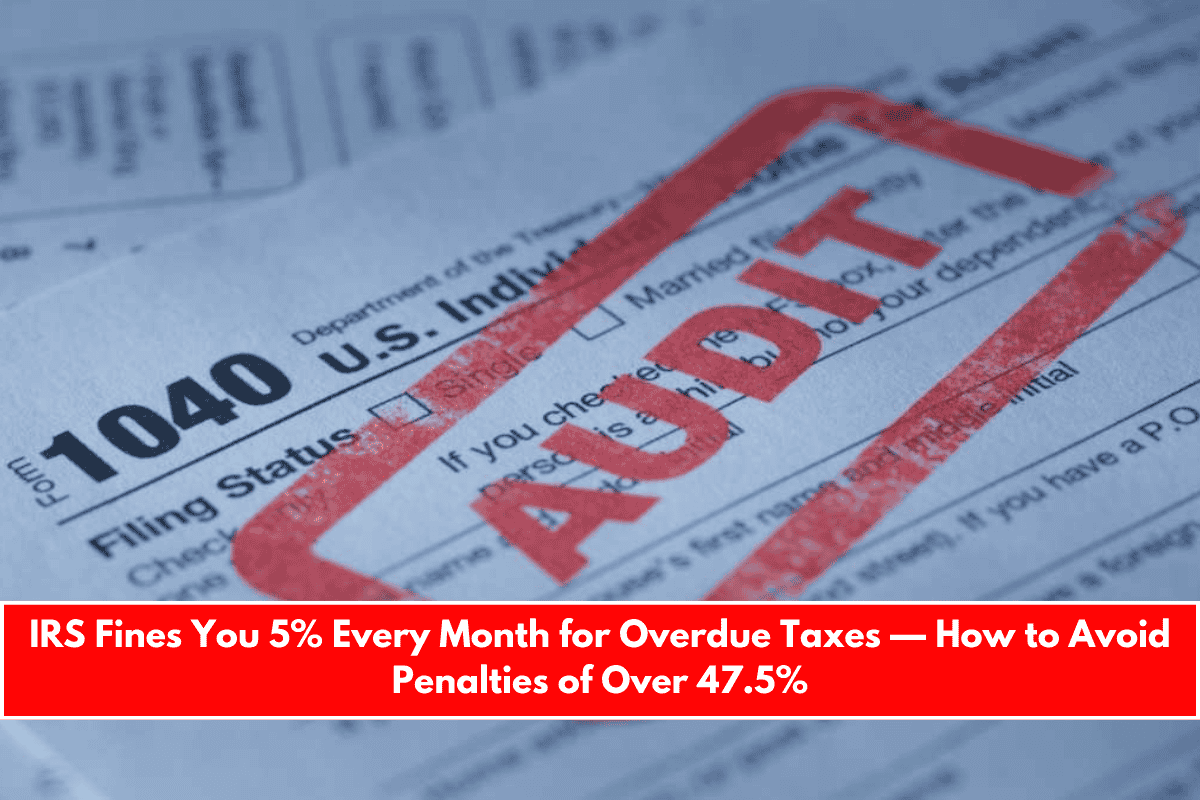Filing taxes late or not paying them on time can lead to big problems in the United States. The Internal Revenue Service (IRS) takes this very seriously and applies tough penalties to make sure everyone follows the rules. These fines can grow fast and become a big financial burden if you don’t act quickly.
If you’ve missed the 2025 tax deadline, here’s everything you need to know about the penalties, how they are calculated, and how you can reduce or avoid them.
What Is the Tax Deadline in 2025?
For the year 2025, Tax Day—the deadline to file your federal tax return—was April 15. If you didn’t file or pay your taxes by this date, the IRS may start adding fines and interest to your account.
Penalty for Filing Taxes Late
If you don’t file your tax return on time, the IRS charges a penalty of 5% per month on the amount you owe. This can go up to a maximum of 25%. If you delay more than 60 days, the minimum penalty is either $510 or 100% of the tax due, whichever is less.
This penalty can be avoided only in special cases like natural disasters, IRS errors, or other valid reasons. These are reviewed under the IRS’s “Reasonable Cause” policy.
Penalty for Not Paying Taxes on Time
Even if you file your return on time, you still need to pay your tax. If you don’t, the IRS charges 0.5% per month on the unpaid amount, again up to a maximum of 25%.
If you set up a payment plan with the IRS, this penalty is reduced to 0.25% per month. But if you ignore an IRS notice of tax collection and don’t respond within 10 days, the penalty increases to 1% per month.

How Penalties Are Adjusted
If you both fail to file and fail to pay, the IRS avoids double penalties. In such cases, instead of charging 5% for not filing and 0.5% for not paying, it charges a combined 4.5% per month.
This system ensures that the penalties are still serious but not unfairly duplicated. However, they still grow fast if not handled.
Interest on Unpaid Taxes
In addition to penalties, the IRS also charges daily interest on the total unpaid amount. This interest is based on the federal short-term interest rate plus 3%. There is no cap on this interest—it continues to grow until you pay the full amount.
For example, if you owe $10,000 and file your return three months late, your penalty could be $1,500 for late filing and $150 for late payment, plus daily interest.
Can You Get Penalty Relief?
Yes, there are a few ways to reduce or remove penalties:
- Reasonable Cause Relief: If you have a valid reason (like a medical emergency or natural disaster), you can request relief by providing proof.
- First-Time Penalty Abatement: If you haven’t had any penalties in the last three years, you may qualify for this one-time relief.
- Extension with Form 4868: You can file for more time to file (not to pay) your taxes. But you still need to pay at least 90% of your tax by the due date to avoid penalties.
What Happens If You Ignore IRS Notices?
If you ignore IRS notices and don’t pay your taxes, the IRS can:
- Add penalties that can total up to 47.5% of your original tax debt
- Apply a tax lien on your property
- Start garnishing your wages or bank accounts
To avoid this, taxpayers are encouraged to use tools like the IRS Online Payment Agreement Application to set up payment plans or negotiate deadlines.











Leave a Reply